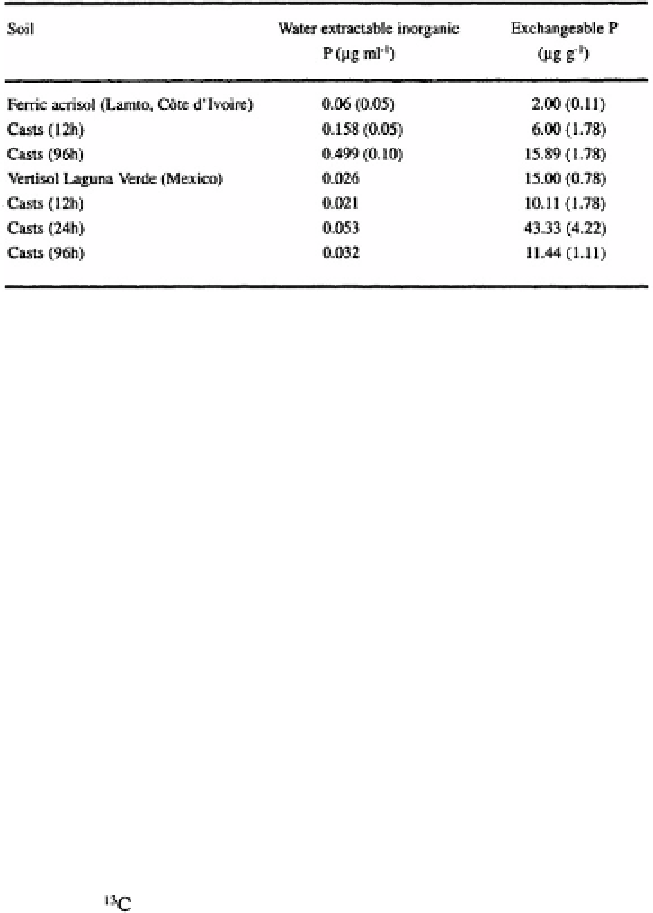Agriculture Reference
In-Depth Information
results to field populations suggested that
of assimilable P are
released in these exotic pastures (Brossard
et al.,
1996).
Synchrony
Little information is yet available to determine whether the release of nutrients contained
within the casts of endogeic worms is synchronous with plant demand. In a microcosm
experiment, endogeic worms placed in a non-labelled soil supporting
the grass
Panicum maximum
rapidly eliminated their as ammonium in their casts;
45 % of this was transferred to the plant (Spain
et al.,
1992). In short-term field
experiments in which plant residues were applied at the soil surface,
the incorporation of into plants was always greater in the presence of endogeic
earthworms (Gilot, 1994; Pashanasi and Lavelle, unpublished data).
At a larger scale, evidence for synchrony is still lacking. In the African savanna at
Lamto (Côte d'Ivoire), seasonal changes in the release of mineral-N in the drilosphere
have been simulated using the DRILOTROP model (Martin, 1990). Results indicate that
a significant proportion of ammonium-N is released over the last few weeks of the rainy
season, when earthworm activity is at a maximum. By this time, plants have completed
their growth and do not appear to take up further N from the soil. Furthermore, Abbadie
et al.
(1992) analysed the natural abundance of in grasses and a control rhizosphere
soil and concluded that the grasses appear to make little use of N from soil organic
matter since they recycle their own nitrogen within plant tussocks. The apparent
contradiction between these results emphasises the need to consider processes at
different scales in order to understand field observations. It is also likely that a better
knowledge of the feeding behaviour of endogeic earthworms would facilitate interpretation
of the results and allow an increased predictability of the effects of earthworms on
nutrient cycling. measurements of soil organic matter, plant material and earthworms
in a sugarcane plantation in northeastern Australia suggest that, in this sandy infertile
soil, earthworms may feed preferentially in the rhizosphere, possibly on root exudates









